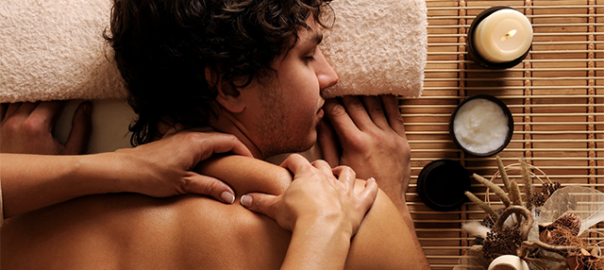Introduction
In the pursuit of fitness and overall well-being, injuries can often be an unavoidable hurdle. Whether you’re an athlete, a fitness enthusiast, or simply someone trying to stay active, injuries can disrupt your routine and impact your quality of life. However, amidst the plethora of injury recovery methods available, there’s one surprising yet effective approach that stands out – Pilates. This article explores the unique and valuable connection between Pilates and injury healing.
Understanding Pilates
What is Pilates?
Pilates is a low-impact exercise system developed by Joseph Pilates in the early 20th century. It focuses on strengthening the core, improving flexibility, and enhancing overall body awareness. Pilates exercises are designed to engage both the body and mind, promoting a harmonious connection between the two. Many were enjoying the exercise program of Pilates reformer Northern Beaches because it also boost hormones.
Principles of Pilates
Pilates is built on six fundamental principles:
- Breath: Proper breathing techniques are essential for coordinating movements and promoting relaxation.
- Concentration: Mindful focus on each exercise ensures precise execution and maximum benefits.
- Control: Exercises are performed with controlled and deliberate movements, reducing the risk of further injuries.
- Centering: The core, often referred to as the powerhouse, serves as the focal point of all movements.
- Precision: Attention to detail is crucial to achieving the intended results of each exercise.
- Flow: Movements in Pilates are meant to flow gracefully from one to another, creating a sense of fluidity.
The Surprising Connection: Pilates and Injury Healing
Pilates for Injury Prevention
Preventing injuries is always better than dealing with them afterward. Pilates, with its emphasis on strengthening the core and enhancing flexibility, plays a vital role in injury prevention. A strong core provides better support for the spine, reducing the risk of back injuries. Moreover, improved flexibility leads to better joint mobility, minimizing the chances of sprains and strains.
Rehabilitation with Pilates
Pilates is widely recognized for its rehabilitative properties. People recovering from injuries, be it from sports, accidents, or repetitive strain, can benefit greatly from targeted Pilates exercises. The controlled and gentle nature of Pilates movements allows for gradual healing without putting excessive stress on the injured area.
Pilates for Back Pain Relief
Back pain is a common ailment that affects millions worldwide. Pilates exercises can offer much-needed relief to individuals suffering from chronic back pain. The focus on core strengthening and spinal alignment in Pilates helps alleviate pressure on the back, providing relief and promoting healing.
Pilates for Joint Injuries
Joint injuries can be particularly debilitating, often requiring specialized attention during the healing process. Pilates can aid in rehabilitating joint injuries by improving flexibility and muscle strength around the affected joint. This targeted approach helps stabilize the joint and accelerates the recovery process.
How to Incorporate Pilates into Your Recovery Journey
Consultation with a Qualified Instructor
Before incorporating Pilates into your injury recovery plan, it’s crucial to consult with a qualified Pilates instructor or healthcare professional. They can assess your specific injury, tailor the exercises accordingly, and ensure your safety during the recovery process.
Starting Slow and Gradual Progression
Patience is key when it comes to injury recovery. Begin with simple and low-impact Pilates exercises, gradually progressing to more challenging ones as your body heals. Avoid pushing yourself too hard, as it may lead to setbacks in the healing process.
Pilates as a Complementary Therapy
Pilates can be an excellent addition to traditional injury recovery methods. Its gentle yet effective nature allows it to complement other therapies, such as physiotherapy or chiropractic care. Many healthcare professionals recommend Pilates as part of a holistic approach to healing injuries, enhancing the overall effectiveness of the treatment.
The Mind-Body Connection
One of the unique aspects of Pilates is its focus on the mind-body connection. During Pilates sessions, practitioners are encouraged to be present and mindful of their movements. This heightened awareness not only improves exercise execution but also helps individuals become more attuned to their bodies. By listening to their bodies, they can better understand their limitations and avoid potential injuries during the recovery process.
Building Overall Strength and Flexibility
Injury recovery often involves regaining lost strength and flexibility. Pilates, with its emphasis on controlled movements and targeted exercises, can aid in rebuilding overall body strength. The combination of strength and flexibility results in improved muscle balance and reduced stress on injured areas, promoting a faster and more effective healing process.
Promoting Long-Term Health and Injury Prevention
Beyond the recovery phase, incorporating Pilates into your regular fitness routine can significantly reduce the risk of future injuries. The principles learned during Pilates sessions, such as body awareness, proper alignment, and core engagement, can be carried over into other physical activities, providing a strong foundation for injury prevention.
Conclusion
Incorporating Pilates into your injury recovery journey can be a transformative and surprising experience. From preventing injuries to aiding in rehabilitation and promoting long-term health, Pilates offers a holistic approach to healing. Its focus on the mind-body connection, gentle movements, and controlled exercises make it a versatile and effective tool for anyone seeking to recover from injuries and maintain overall well-being.
Remember, healing takes time, and patience is essential during the recovery process. Always consult with a qualified Pilates instructor or healthcare professional before starting any new exercise regimen, especially when recovering from injuries.


